5 headsets you should buy instead of the Vision Pro
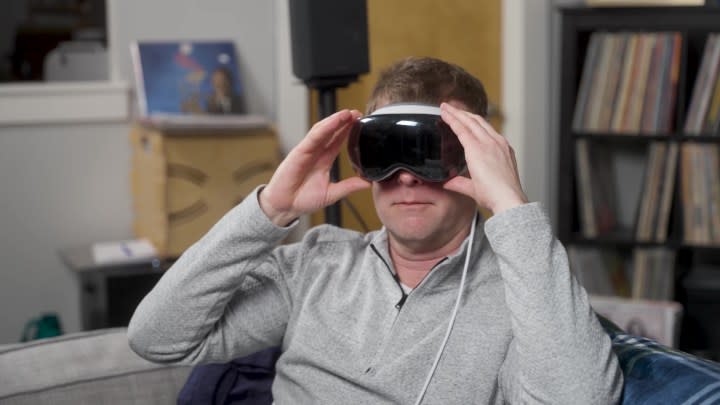
The Vision Pro is a great piece of technology that’s built specifically to fit into Apple’s ecosystem, but there are plenty of other great VR headsets to choose from. Many cost less while offering similar experiences. A few even challenge Apple head-on, matching and exceeding the Vision Pro’s advanced technology.
Here are five headsets you should buy instead of the Vision Pro and why you might like them better than Apple’s spatial computer.
Meta Quest 3
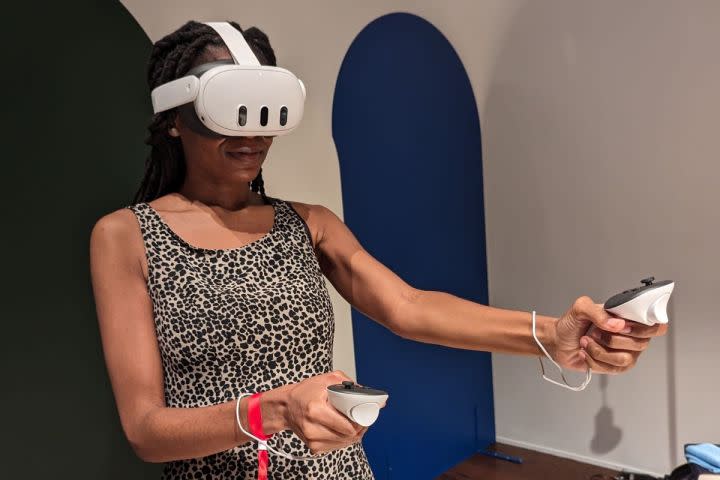
The Meta Quest 3 improves on every aspect of the world’s most popular VR headset, the Quest 2, and it does so while keeping costs low. For $500, you get a great mixed-reality experience that in some ways beats the Vision Pro.
At one-seventh the price, the $500 Quest 3 can’t compete with the performance of the M2 chip powering the $3,500 Vision Pro or the sharpness of the 12.5-megapixel-per-eye displays. Apple packed so much tech into its headset that it doesn’t even make sense to compare the specifications.
On the other hand, the Quest 3 is the best affordable VR headset with a large, diverse game library that no other manufacturer can compete with. As Meta’s CEO notes, the Quest 3 can match many of the Vision Pro’s features, albeit with less sharpness and a lack of 2D apps.
If you like the idea of working out in VR, the Quest 3 wins again. Meta owns Supernatural, the leading VR fitness app, and the Meta store lists 40 other titles with sports simulations, meditation, and gamified workouts of all kinds. The library of games, apps, and experiences gives Meta a big advantage over other VR headsets. Plus, you can connect to your computer to play Steam VR, games, and stream Xbox games with Game Pass.
Varjo XR-4
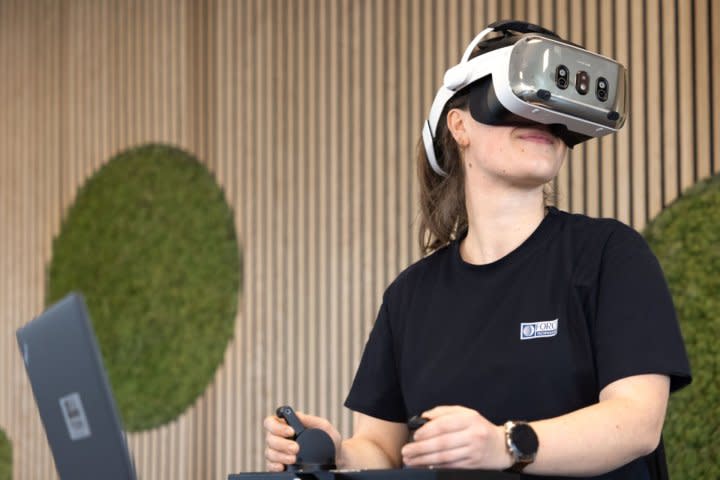
If money isn’t a limiting factor when you shop for a VR headset, the Vision Pro’s price won’t scare you. However, the premium price doesn’t mean it’s the best that money can buy.
I was blown away by Varjo’s Aero headset in January 2023. VR technology is moving so quickly in the last several months, its advanced technology has already been surpassed.
Check out Varjo’s XR-4, a PC VR headset designed for enterprise users that boasts a higher resolution than the Vision Pro. The XR-4 displays show 14.3 megapixels for each eye, about 15% more than Apple’s headset.
I haven’t had a chance to try Varjo’s best headset yet, but the color passthrough cameras are technically better also. The XR-4 features dual 20 MP cameras versus the Vision Pro’s 6.5 MP camera resolution. If you can afford either of these VR headsets, you might already own a powerful Windows PC with a strong graphics card. That’s a requirement of the Varjo XR-4, since there’s no standalone mode.
The Varjo XR-4 costs $3,990, so research well before making a purchase decision. If you’re serious about VR and require the best for PC productivity and realistic simulations, the XR-4 is a top contender.
Pimax Crystal
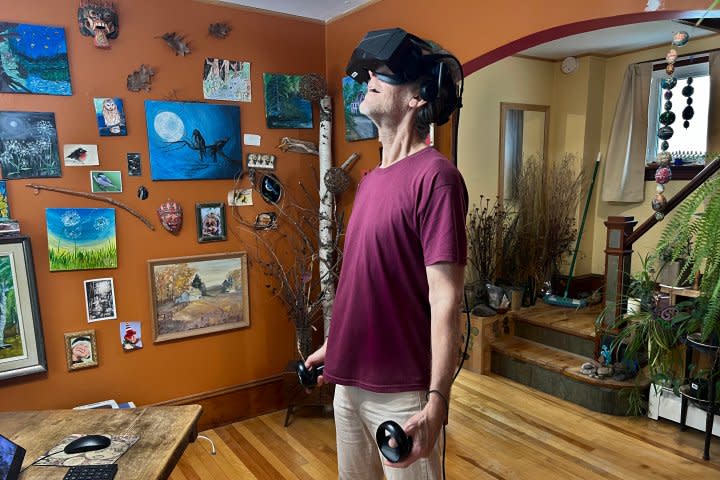
The Pimax Crystal stole the crown from the Varjo Aero as the sharpest consumer VR headset available in 2023. With 8-megapixel-per-eye displays, it features 80% greater resolution than Meta’s best.
Apple raised the bar in 2024, but the Crystal is still very clear compared to most other VR headsets. At $1,600, it’s too expensive for average VR users, and not impressive enough for enthusiasts who are willing to spend more. Pimax has two new variants to address the rapidly changing VR marketplace, both of which are PC VR headsets that require a gaming PC.
The $700 Crystal Light weighs less than the original yet matches many of its best features at a much lower price. The Pimax Crystal Super is a high-end solution starting at $1,800 that boasts 14.7-megapixel-per-eye displays. Very few VR headsets use micro-OLED displays, making this optional upgrade notable. With darker blacks and vibrant colors, the Crystal Super’s display could look as good as Apple’s Vision Pro.
I was impressed by the original model but haven’t tried the Pimax Light or Super. While the Pimax Crystal is available now, you can preorder and reserve the new models, which Pimax expects to ship later this year.
Meta Quest Pro
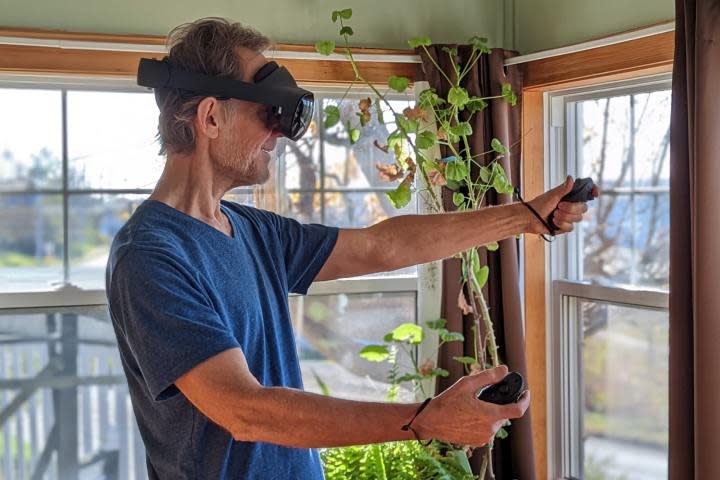
Since Apple’s Vision Pro is more of a productivity headset than a VR gaming system, it might be better to compare it to Meta’s work-centric VR headset. When Meta launched the Quest Pro in 2022, the idea was to use it as a work-from-home solution or in the office alongside your computer.
While the Quest Pro wasn’t a good laptop replacement in 2022, the Quest platform has come a long way in the last two years. Meta’s browser is much more capable and so is the Quest operating system, now known as Horizon OS.
For example, you can copy and paste, swipe in text on the virtual keyboard, and download images, all of which were once difficult. Some new productivity solutions like the Fluid freeform browser, Softspace note-taking app, and Campfire design review app are making the Quest Pro a compelling option for working in VR.
One year makes a big difference in the tech world, and the $1,000 Quest Pro’s trails the Quest 3 in performance and graphics fidelity. Don’t bother sizing up its specifications next to Apple’s Vision Pro.
However, the great apps and unmatched comfort are what draw me back to this headset. The Quest Pro’s unique design places the battery at the back for balance and suspends the display in front of my eyes with room for my face to breathe, eliminating pressure on the cheeks.
Immersed Visor
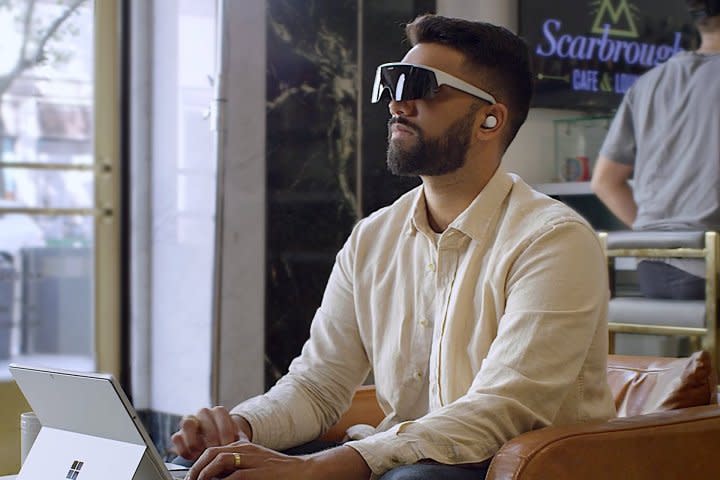
If you can wait a few months, you might want to check out a new headset coming from a VR app developer. Immersed is a popular remote VR desktop app available on the Meta Quest platform. It just became available for the Apple Vision Pro as well.
The Immersed Visor is a super-lightweight VR headset that looks more like a pair of sporty glasses. Despite the small size, Immersed claims it will match many of the Vision Pro’s best features at a fraction of the cost.
A lighter VR headset is something we all want. As magical as the Vision Pro is, it’s just too heavy.
I can’t wait to try this VR headset. Starting at $1,050, the Visor boasts 4K-per-eye micro-OLED displays, eye-tracking, with the ability to run apps in standalone and PC VR modes. Immersed expects to launch the Visor this year and is now accepting preorders. So, while you can’t buy this one yet, the Visor is definitely want to look out for.
Wait for the Vision Pro 2?
The ultimate Apple Vision Pro alternative might be the Vision Pro 2 or Vision Pro Lite. While we’re always hoping for improvements in performance and graphics quality in ordinary VR headsets, the Vision Pro started with the sharpest displays and most powerful processor for standalone use.
I’m hoping for a less-expensive and lighter model. Apple would have to cut some features and possibly use fewer premium materials to check both items off my wish list. Perhaps, losing the front EyeSight display, switching to an A-series processor, and using some plastic in the design could help with a slimmer budget model.
Realistically, a second-generation Vision Pro is over a year away, with some recent reports pointing to 2026 or beyond. Apple just launched the Vision Pro in February and hasn’t mentioned any other spatial computers.
That’s a long time to wait when you’re excited about what’s available right now. If the only solution you’re satisfied with is a headset made by Apple, the Vision Pro could still be the right choice.

